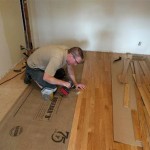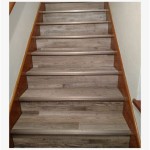Laying Vinyl Flooring: A Comprehensive Guide
Vinyl flooring has become increasingly popular due to its durability, ease of installation, and variety of styles. Whether you're a seasoned DIYer or a novice, understanding the essential aspects of vinyl flooring installation is crucial for a successful outcome.
Choosing the Right Vinyl Flooring
There are various types of vinyl flooring available, each with its own characteristics:
- Sheet Vinyl: Large, rolled sheets provide a seamless look, but can be challenging to install.
- Luxury Vinyl Tile (LVT): Planks or tiles that mimic the look of wood, tile, or stone, with easy click-lock installation.
- Vinyl Composition Tile (VCT): Durable tiles suitable for commercial or high-traffic areas.
- Waterproof Vinyl Flooring: Durable and water-resistant, ideal for kitchens, bathrooms, and basements.
Preparing the Subfloor
A well-prepared subfloor ensures a sturdy foundation for the vinyl flooring:
- Remove existing flooring and ensure the subfloor is flat, smooth, and dry.
- Fill any holes or cracks with a patching compound.
- Install an underlayment or padding to provide cushioning and noise reduction.
- Trim the sheet to fit the room.
- Apply adhesive to the subfloor.
- Roll out the sheet and smooth it down with a roller.
- Start in a corner and click the planks or tiles together.
- Stagger the joints for strength.
- Use spacers to maintain even gaps.
- Trim Around Obstacles: Use a utility knife or oscillating tool to cut around pipes, fixtures, and door frames.
- Install Baseboards: Secure baseboards around the perimeter of the room to cover expansion gaps.
- Clean the Floor: Remove any excess adhesive or debris with a damp mop.
- Allow the vinyl flooring to acclimate to the room temperature for 24 hours before installation.
- Use high-quality materials and follow the manufacturer's instructions carefully.
- Rent a flooring roller for sheet vinyl installation.
- Remove furniture and other obstacles before starting.
- Allow the flooring to cure for 24 hours before heavy use.
Installing the Vinyl Flooring
The installation method depends on the type of vinyl flooring:
Sheet Vinyl:Trimming and Finishing
Once the flooring is laid, it's time for trimming and finishing:
Tips for Success
Conclusion
Laying vinyl flooring can be a rewarding DIY project with the right preparation and technique. By following these essential aspects, you can achieve a durable and stylish floor that will enhance your home for years to come.

Vinyl Tile Installation A Comprehensive Guide Gc Flooring Pros

Post Nbl Express Eco Flooring

How To Lay Vinyl Flooring

How To Professionally Install Vinyl Plank Flooring A Comprehensive Guide Harshaw Home Renovators

Vinyl Plank Flooring Cosy Group

A Beginner S Guide To Installing Vinyl Plank Flooring Dumpsters Com

Post Nbl Express Eco Flooring

Preparing To Install Luxury Vinyl Flooring A How Guide

Installing Vinyl Plank Flooring A Comprehensive Guide Evergreen City Floors Installation Specialists

How To Lay Sheet Vinyl Flooring Installation 2024 Full Guide
See Also







